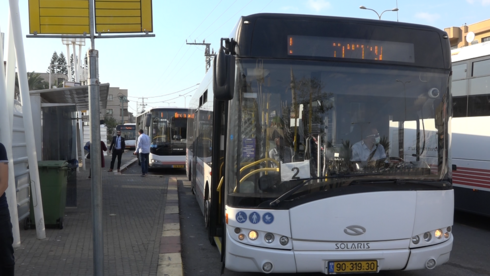
Public transportation project in the Sakhnin periphery
“If I want to get from place to place in Haifa – the bus will arrive in five minutes. Why does he come to Sakhnin every hour?”, Wonders Tamar Abu Saleh, a high school student from the city who clarifies that “those who do not have money for a car, have to walk.” “Natalie Shahin, a student who lives in Sakhnin and studies in Ashkelon, says that” there is a lot of time waiting at the bus stops and others – for studies, work, the doctor. There are many students without cars who depend on public transportation. I keep calling the family – ‘ Tells.
Mahmoud Abu Saleh, a student from the city, agrees: “With the increase in the number of students in Arab society, we need more public transportation.” The students say that the problem in the city is not just low frequency, but neighborhoods that public transportation does not reach, because the houses are densely built and not suitable for bus traffic.
8 View the gallery
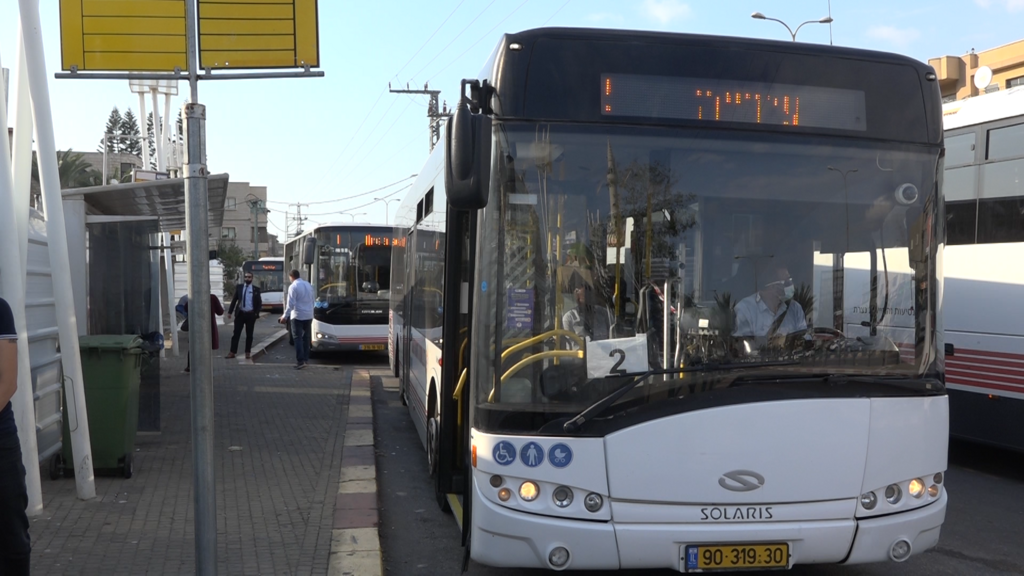

Public transportation in Sakhnin
(Photo: Leahy Krupnik)
8 View the gallery
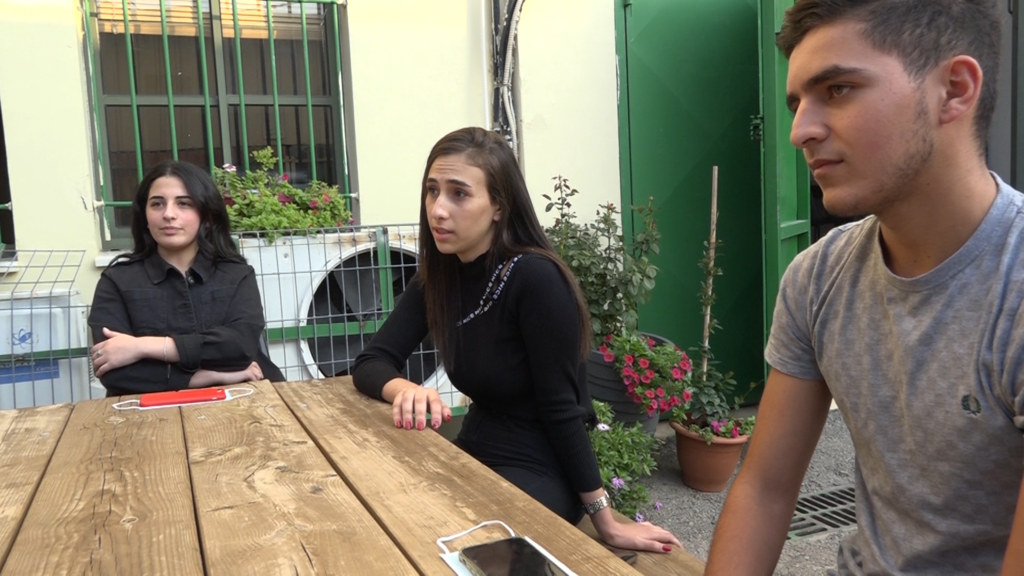

Say Abu Saleh, Natalie Shaheen and Eden Shaheen
(Photo: Leahy Krupnik)
Not far away, in Tamra, lived Rifat Hijazi. “When I returned here after studying in Haifa, I thought I could give the car to my wife, and travel to work by public transport as I did in Haifa. I discovered that I could not get to work in Haifa by public transport and bought another car, after waiting for hours at stations.” He said, “If anyone misses a bus here then next another hour and a half two hours. Waiting hours every day.”
“There is a large gap between the Jewish and non-Jewish population in road infrastructure, public transportation and service infrastructure, which stems from the improper treatment of Israeli governments,” the State Comptroller wrote in 2019.
In the harsh report on public transportation in Arab society, the auditor listed quite a few shortcomings: lack of master plan for development in non-Jewish localities (since such report was presented), lack of public transportation services and private transportation as a substitute, lack of criteria On behalf of the recipients of the service.
8 View the gallery
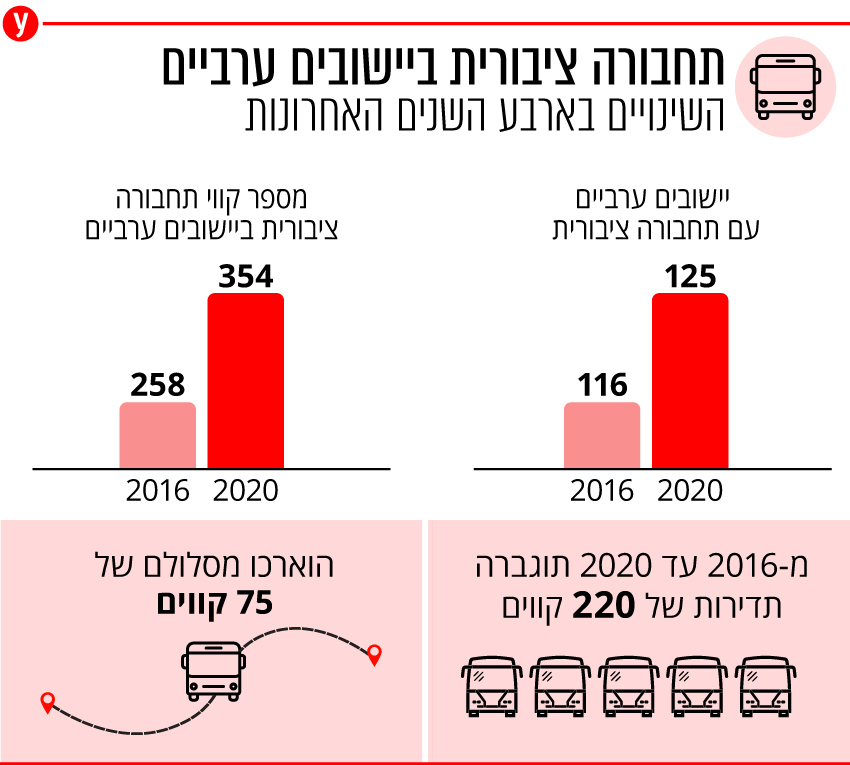

In recent years, the state has stepped up efforts in Arab localities, but the results of these efforts are negligible. If in 2016 116 localities were lined up by public transport, their number rose to 125 in 2020. Since 2016, the number of lines has increased from 258 to 354, the frequency of 220 lines has been increased and the route has been extended by 75.
According to the Bank of Israel report from 2020, the gaps have narrowed unevenly and “the quality of bus service in large Arab localities where about half of the Arab population in Israel lives is about a third lower than in Jewish localities with similar characteristics. The situation of these localities did not improve in 2019-2010 and in some of the variables it even deteriorated significantly. “In the small localities, on the other hand, the level of service increased.
8 View the gallery
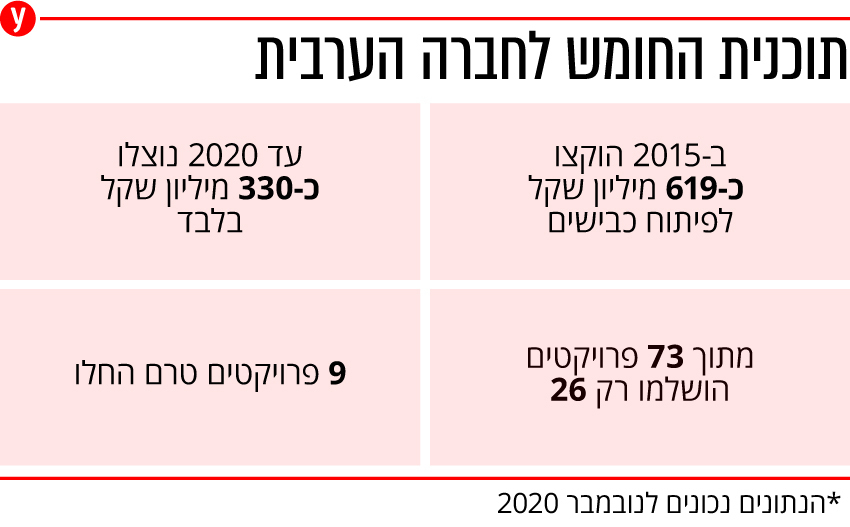

The Ministry of Transport claims that the Ministry of Finance did not transfer the money, but a government source insists that the money was transferred, and then diverted to cover the ministry’s deficit. Accordingly, as the Bank of Israel has demonstrated, the rate of reducing the gaps does not approach the state’s targets.
Alongside the plan, infrastructure that is in various stages of implementation could improve the situation in years to come: the eastern railway line that passes near Highway 6 will include two stations in Arab localities for the first time since the establishment of the state, although the stations are not located within cities. The light rail between Nazareth and Haifa, which is in the process of being tendered, will also help with accessibility. Until then and thereafter, most travel to Arab localities will be based on buses.
“The issue of public transportation infrastructure in Arab society is a problem of egg and chicken,” explains Hijazi, who set up a headquarters to improve public transportation in his city. “There are difficulties – the stations must be accessible, and find no place, and all sorts of issues like that. It’s a painful issue.”
“The issue of public transportation infrastructure in Arab society is a problem of egg and chicken. There is a problem – the stations must be accessible, and find no place, and all kinds of issues like that. It is a painful issue.”
According to him, many of the buses in the city are direct, so even though they are in a traffic jam inside the city – the residents cannot get on them. Another problem is poor planning of the lines: “There are planners in Jerusalem who make a ‘copy of the glue’ from Jewish localities. Then they plan a line that is not adapted to the needs, no passengers get on it and then they say they cancel the line because they do not travel on it. They wanted to cancel it because there are no passengers. “
“The closest station to me is a kilometer and then I have to wait for the bus and if I missed the next one will be in more than half an hour, by this time I would have arrived at work in Haifa. A lot of people here rely on transportation from work in factories and they take advantage of the fact that there is no public transport.” “Instead of raising wages in a logical way. And the employee depends on his employer,” he says. “The trip in the city also takes almost an hour. An old man who wants to get to the health insurance fund – it is better for him to walk.”
8 View the gallery
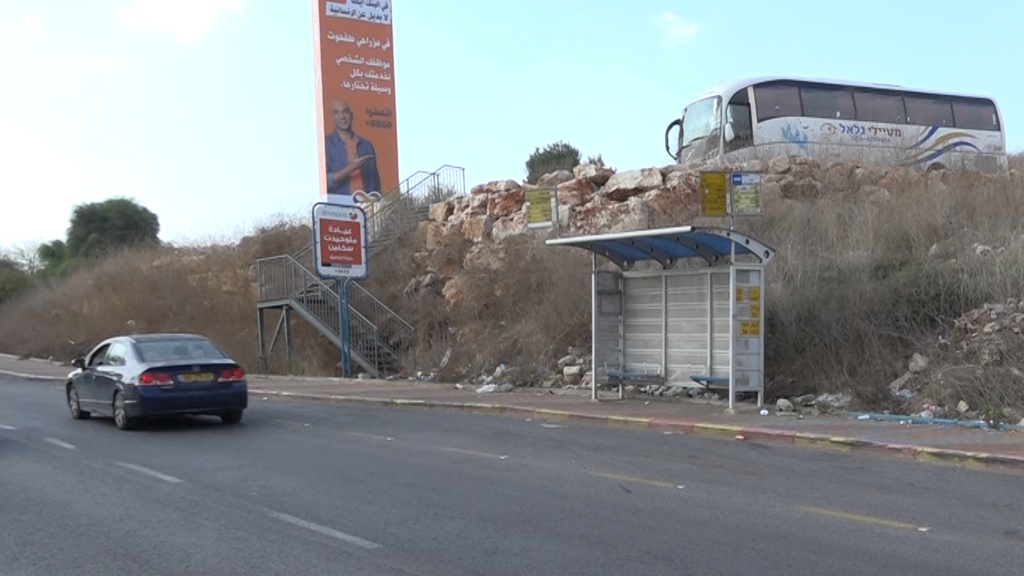

Bus station in Sakhnin
(Photo: Leahy Krupnik)
A study conducted by the Sikui organization shows that the gaps between similar localities are higher: in Safed there are 13 times more lines than in Tamra and 7.5 times more frequently; In Afula, 4 times more lines than Baum al-Fahm and 3.5 times more frequently; Arara has no municipal service and Migdal Haemek has 9 lines. Ixal also does not have a service, but in Or Akiva there are 4 lines. Gaps were also observed in the number of trips and in the number of destination stations outside the locality. In six Arab cities with more than 20,000 people there is no public transportation, and in Umm al-Fahm only 4 lines.
City planner Amal Urabi from the association explains that the problem is not just about frequency: “Many times when a bus enters it makes a circle in the locality and leaves, those who live in a satellite neighborhood have to walk 5-4 km. The existing infrastructure is dilapidated and the streets are narrow, but buses or minibuses need to be moved, because if they wait for the infrastructure, there will be no public transportation. When I was studying in Haifa, I traveled two and a half hours on the lines from Deir Hanna. I would get on the bus at five-thirty in the morning to get to the 8 -:30 lecture. “
“Many times when a bus enters, it makes a circle in the locality and leaves, those who live in the satellite neighborhood have to walk 5-4 kilometers. The existing infrastructure is dilapidated, and the streets are narrow.”
According to Urabi, “If a third of an Arab household’s expenditure is on a car and a half of society below the poverty line, that means a car bond and an inability to get out of poverty. If a 19-year-old girl works at SuperPharm in Carmiel, without public transportation she needs a car. “She works in a small business in the locality. These businesses do not pay according to the law, she will receive NIS 3,000 and will not go to work that might give her tools.”
Jaafar Farah, CEO of the Mossawa Center, explained that “the Central Bureau of Statistics indicates an improvement in the data, but if you check the number of vehicles – then you buy old vehicles for NIS 3,000-4,000 without insurance, without a test, the main thing is to get to work, because public transportation It does not function or does not exist. ”
8 View the gallery
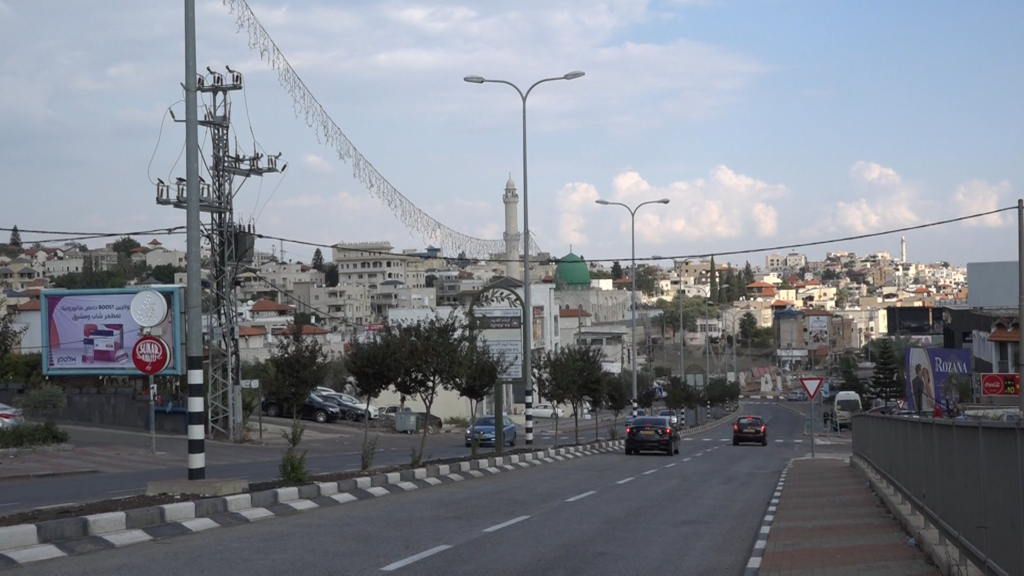

Sakhnin, inefficient public transportation
(Photo: Leahy Krupnik)
“In Jisr a-Zarqa, you will see women standing on the road and it is called a ‘bus stop.’ From the point of view of the Ministry of Transportation, there is a service for the locality.” According to him, the train stations are located far from the Arab settlements: “There is a train station in Binyamina and no one thought to bring it closer to Jessar or Paradise, which are also large settlements, or the ‘Rahat’ station on the other side – in Omer or Carmiel when they did not intend to serve Maj. “Del Krum. Sakhnin, Araba and Dyer Hanna are like a metropolis and no one thinks of connecting Carmiel to them like Afula is not connected to Umm al – Fahm.”
He said, “As part of the 922 program there may be progress but you see that there is money left and just flirting with it.”
Public transportation problems are also felt in the Negev. According to the planner of these cities, Gil from the Sikui organization, in the Negev live one hundred thousand residents in unrecognized villages: “There are services that the state is obligated to provide regardless of location and status of the locality and therefore unrecognized localities also need education, health and transportation.” For the Bedouin in the known and unfamiliar localities, the level of accessibility to public transportation is nil. “Except for one locality, there is no unrecognized locality out of 35 that a bus enters,” she says.
For the Bedouin in the known and unfamiliar localities, the level of accessibility to public transportation is nil. Except for one locality, there is no unrecognized locality out of 35 that a bus enters
Gil says that “buses traveling on the main road were also inspected – can they stop at the entrance to the village? The answer from the Ministry of Transportation is often negative.”
“If a woman in an unfamiliar village needs vaccinations for a child or pregnancy follow-up – and there is no clinic in the village, how does she get there?” Gil wonders. “If the bus stops at the entrance to the village she will find someone to take her, or walk, which is also not good but if the bus does not stop at all, that woman not only will have to walk to get to the road, she will walk on the curb to get to the station a few more miles. “And on the roads around Be’er Sheva, you can see pedestrians walking on the side of the road for miles.”
8 View the gallery
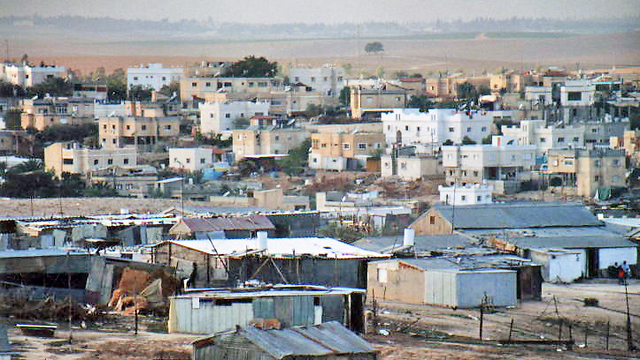

Also suffer from the Bedouin diaspora. Rahat, Archive
(Photo: Archbishop Amos Brandeis)
The approach in the Ministry of Transportation, as expressed in the master plan promoted by the ministry, is that in order to solve the problem of public transportation in Arab localities, the infrastructure problems in them must be solved.
Last November, the Ministry of Transportation announced the allocation of NIS 30 million for the planning of the plan, which includes strategic mapping in all 133 localities in which a non-Jewish population lives. To the operating gaps of public transport.
Residents who have been waiting for decades for an accessible and equal service that can open a window to various opportunities, expect the Ministry of Transportation to operate in the meantime with tools tried around the world such as flexible transportation, small buses, entry into localities and other solutions.
Sikui claims that the way to reduce the gap begins with gathering information and characterizing the needs, filling the positions of public transportation manager in Arab society and planning intra-urban public transportation.
The State Comptroller also had ideas for correction: defining criteria for the level of development of public transportation, preparing a multi-year plan to reduce the gaps by the end of 2022 and evacuating infrastructure for development.
“Investment in public transportation infrastructure in the non-Jewish population contributes to the freedom of movement and increased access of non-Jewish populations to employment centers, educational institutions and leisure centers, as well as to realizing economic potential. These investments may also contribute to improving road safety In the aforesaid populations. “
Ministry of Transport response: “For the past five years, the ministry has been promoting a program to improve the public transportation system in non-Jewish localities. Infrastructures have been improved, information has been made available to Arabic speakers and new bus lines have been operated, except for localities whose infrastructure does not allow public transportation.
“Since the five-year plan, more than 130 new lines have been opened, including about 70 bus lines to employment centers and institutions of higher education. The scope of service has increased by 300%. In recent years, the Ministry of Transportation has invested hundreds of millions in public transportation development in localities and is expected to invest more than 400 The number of passengers on public transportation in non-Jewish localities has increased by hundreds of percent.
In the last two years, the number of lines serving the non-Jewish population has increased by 40%, the frequency of 165 lines has been increased, the lines’ operating hours have been extended to suit night shift workers and the route has been extended to 65 lines, within localities and from them to major destinations.
“In the last two years, the number of lines serving the non-Jewish population has increased by 40% and has been increased frequently by 165 lines.”
Thus, in Taibeh, the service was doubled by 140% (7 new bus lines, out of 12 currently operating), and in Tamra, the service was expanded by 61% (8 new lines out of 21 operating today). In addition, transportation information in Arabic was made available. 40 “public transportation financiers” in the authorities and continues to promote programs to train additional coordinators, complete the master plan for the years 2020-2030 and promote an information campaign.
“With the entry into force of the government decision, goals were set: one compares the service in the Arab localities, and presents destinations, including several weekly trips and bus stops. The other compares the service in the Arab localities against similar Jewish localities, based on various parameters, including several localities with and without transportation Public, number of residents per station and more.
8 View the gallery
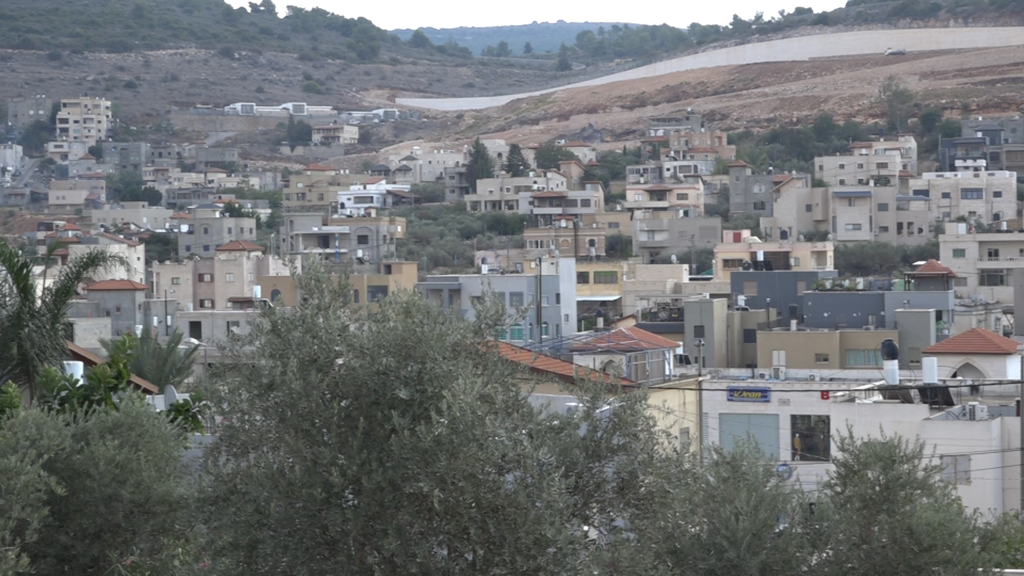

disconnected. The city of Sakhnin
(Leahy Krupnik)
“The Ministry of Transportation has set a goal of producing equality by 2022. The percentage of localities with public transportation is about 90% in the Jewish and Arab sectors, and the gap in total weekly travel between Arab society and Jewish localities has narrowed in recent years. “In addition, the ministry prepared a similar document to compare the level of service between the two sectors for the years 2015-2020.”

